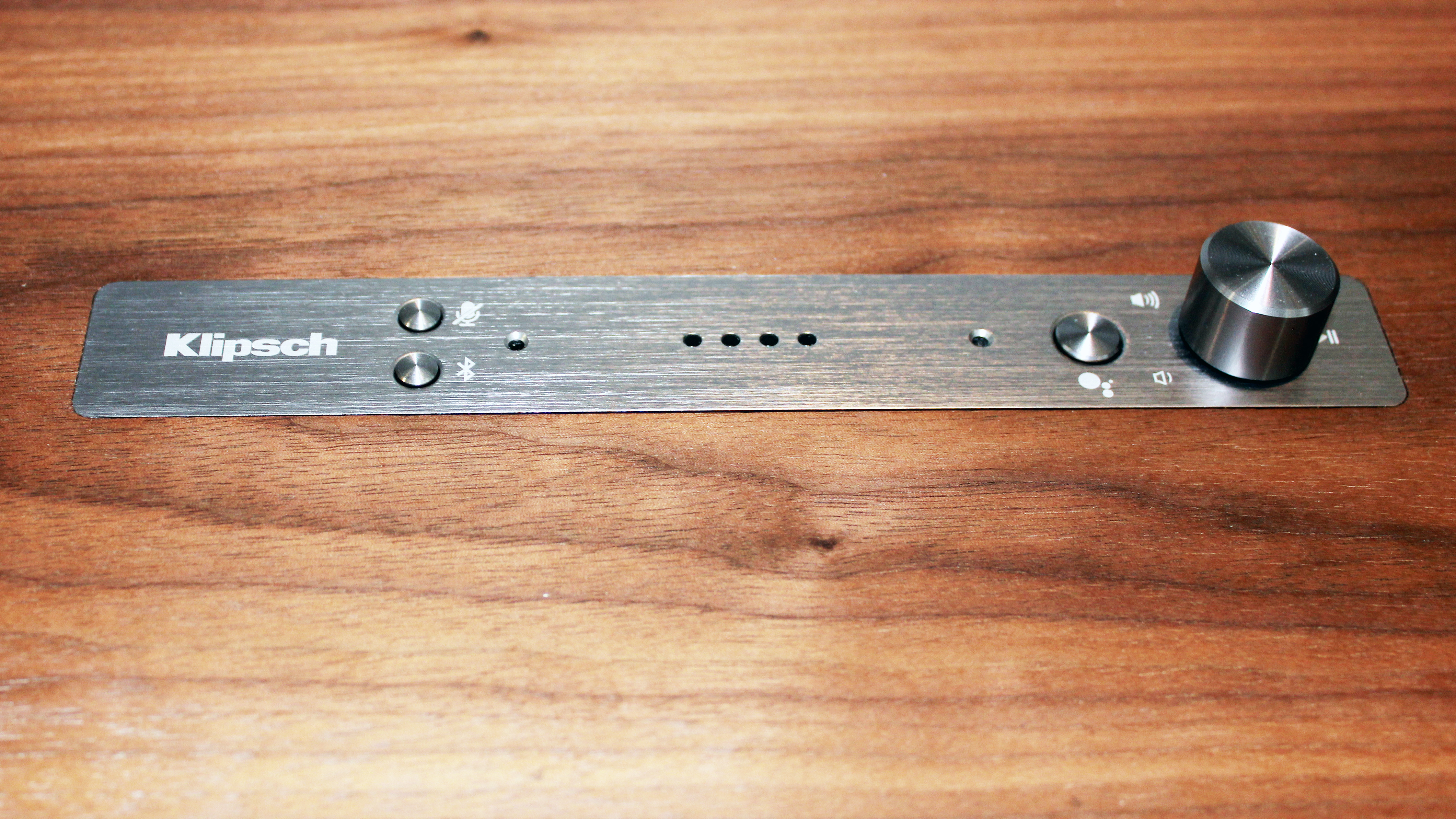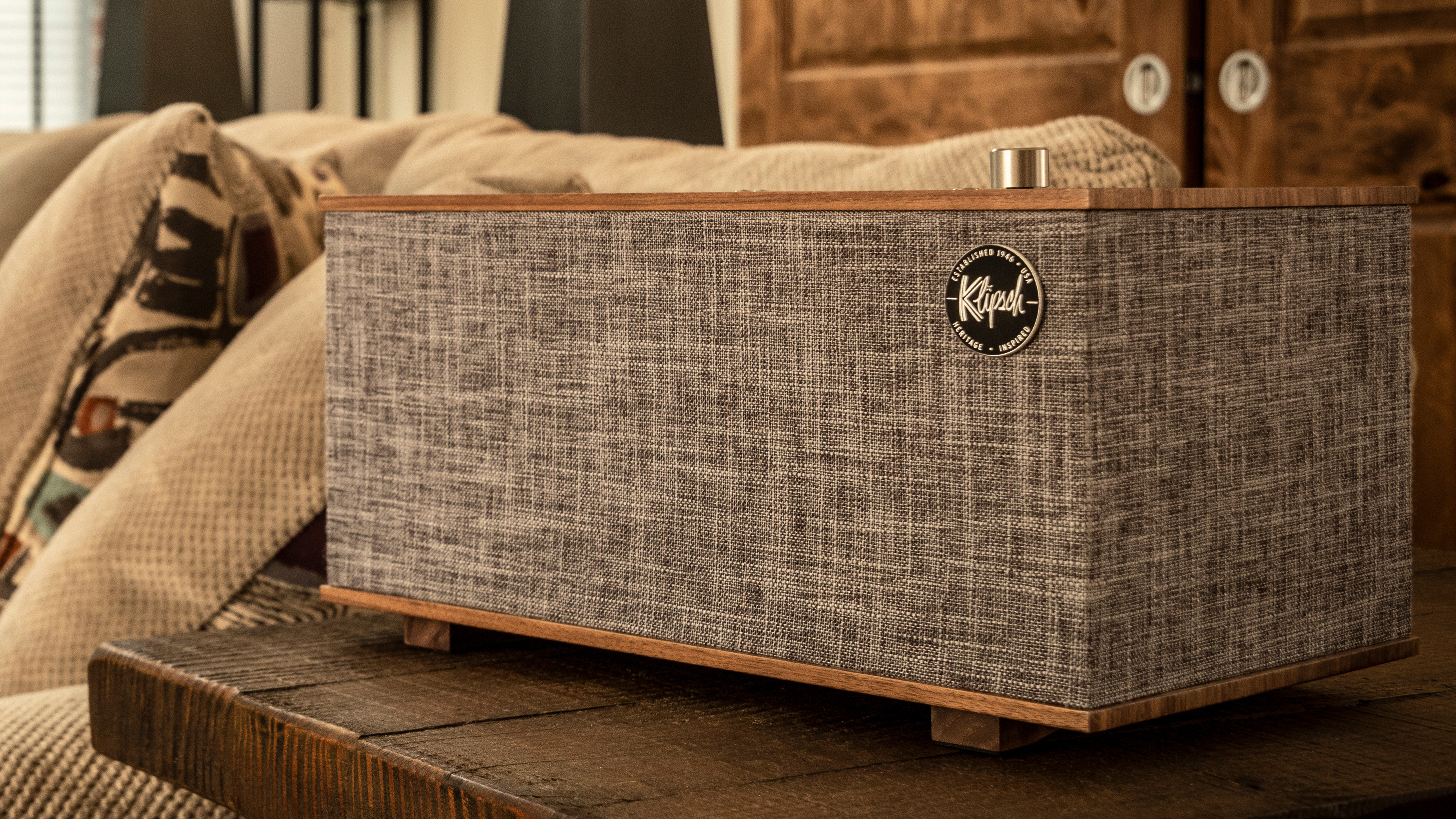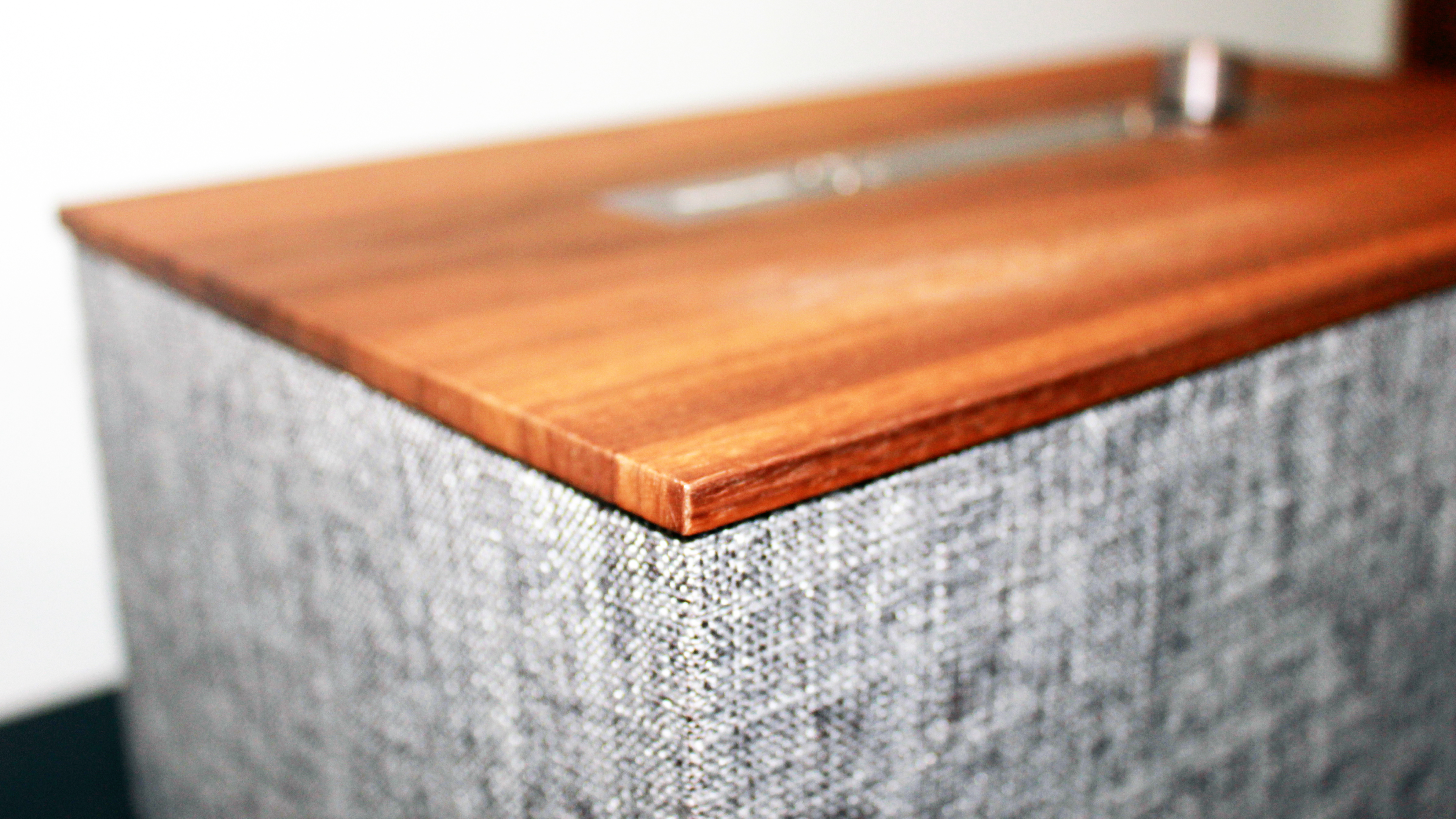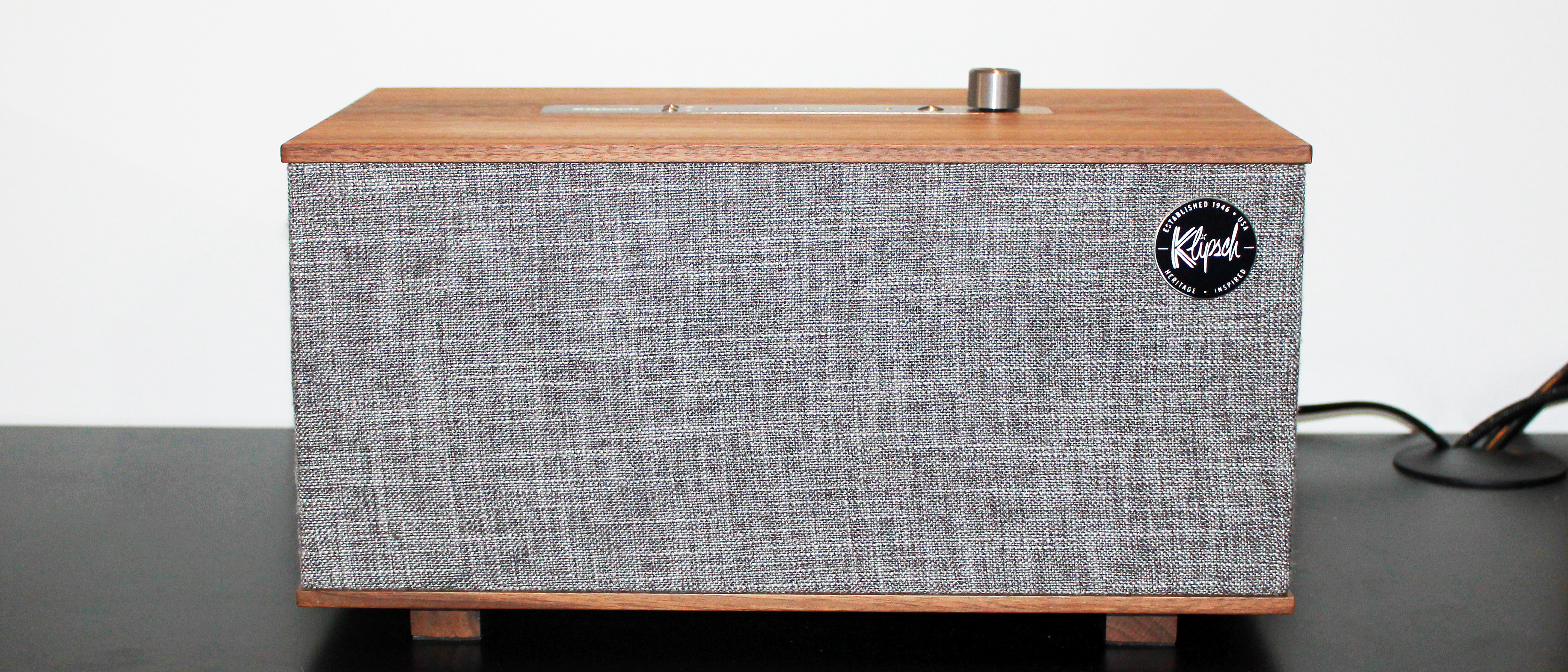Early Verdict
The Three with Google Assistant is loud and proud, with a high acoustic output and an wide soundstage. Yes, it's expensive, but its cool mid-century design and integrated Google Assistant could just about justify the price.
Pros
- +
Luxurious design
- +
Very loud
- +
Wide soundstage
- +
Google Assistant built in
Cons
- -
Very expensive
- -
Treble can be harsh
Why you can trust TechRadar
Audio company Klipsch unveiled 10 new products at this year's CES 2019 convention in Las Vegas, including a new family of wireless in-ear headphones, portable speakers, soundbars, and the latest addition to its Heritage range, The Three with Google Assistant.
One month later at the Bristol Hi-Fi Show, we had the chance to test out the newly Google Assistant-integrated smart speaker.
Price and availability
The Three with Google Assistant is available to purchase for $499 / £445, which works out at around AU$815 based on current conversion rates. However, it doesn't look like the smart speaker is available to buy in Australia yet, and there is so far no word on an expected release date for this territory.
Spending nearly $500 on a smart speaker is no small investment, and you can get alternatives for much cheaper, like the Google Home, which costs $129 (£129/AU$199).
What the Google Home doesn't have however, is the same level of audio tech that Klipsch claims to have built into The Three. Perhaps a better comparison is the Marshall Woburn II, which is roughly the same size as the Three, and also costs just under $500.
So, can The Three measure up to the mighty Woburn? Although we can't say definitively before spending more time with the speaker, here are our initial thoughts ahead of a full review:

Design
The Three with Google Assistant has an achingly cool mid-century style design, with a luxurious-looking walnut veneer cabinet and a gray fabric grille that echoes the design of the Google Home Max.
On the top of the speaker you'll find a control panel in brushed stainless steel with an array of buttons and and a volume dial, as well as two built in microphones.
There's also a button that allows you turn off the microphone (useful if you don't want your speaker to be constantly listening to your conversations) and a Bluetooth button if you want to pair your device wirelessly.
On the right of the control panel, you'll find a dedicated Google Assistant button for summoning the voice assistant if you don't want to control the speaker using your voice.
The control panel also features an attractive row of four LEDs that light up when the speaker listen out for your voice commands or connected via Bluetooth.

Features and performance
When we listened to The Three with Google Assistant, we were impressed by its room-filling, warm acoustics, and powerful bass output, which means it could work very well as a party speaker.
We tested it out on Drake's 'Started From The Bottom', and we felt the tinned snares and punchy percussive hits had an impressive level of detail. Treble frequencies are clear yet pleasingly grainy, although they may sound harsh to more sensitive ears, particularly when played at higher volumes.
Speaking of volume, The Three's whopping 106dB of acoustic output makes it a very loud speaker indeed; while this is fantastic for blasting your music at high volumes, audiophiles may find the soundstage a little brash or unrefined.
Saying that, audiophile will likely appreciate the fact that The Three features 92kHz/24-bit decoding, which means you should be able to play Hi-Res Audio tracks without any loss of quality.
Vocals and other mid frequency sound have a smooth and detailed quality, while bass frequencies sound vibrant and impactful, thanks to the inclusion of a 5.25" long-throw woofer and two 5.25" dual opposed passive radiators.

Although we weren't able to extensively test the integrated Google Assistant functionality, the inbuilt microphones seemed adept at picking up our voice, even when the speaker was playing loud music.
The inclusion of Google Assistant means that The Three can essentially act as the hub of your smart home, controlling your smart thermostat, locks, lights, and more - unlike the Marshall Woburn, which has no 'smart' features.
You also have access to other Google Assistant features, which means you can ask The Three to add items to your shopping list, play podcasts or music, stream video to your TV using Chromecast, and read you the news.
If you have other Google Assistant-compatible speakers, you should be able to set up a multi-room system including The Three – again, this could be a very useful feature if you need a speaker to blast your party playlist in every room of your home.
Early verdict
In the short time we spent with The Three with Google Assistant, we already got a pretty clear idea of the smart speaker's character; fun, brash, and unabashedly loud.
That's not to say that the speaker doesn't have a well-balanced sound. The audio quality was generally very impressive, with a good amount of separation amongst the different frequencies.
Due to that high acoustic output, treble frequencies did sound slightly harsh at times, and hardcore audiophiles may find that the speaker isn't quite as subtly tuned as say, the Bose Home Speaker 500 or the Sonos One.
Incidentally, you can buy two Sonos Ones for the same price of The Three, and reap the benefits of a stereo system. But, it's not all about the sound quality – a big pull factor of The Three is that cool mid-century design, which we feel could make a stunning focal point in any home.
For your $500, you also get all the smarts of Google Assistant, as well as the smart home connectivity the voice assistant brings with it.
Even though we can't say whether The Three trumps the Marshall Woburn without carrying out more intensive tests, the ability to turn The Three into the central hub of your smart home could give it an edge over its rock-inspired cousin.
We're hoping to get some more time with The Three with Google Assistant in the near future, and once we do, the battle of the big party speakers can truly commence.
Olivia was previously TechRadar's Senior Editor - Home Entertainment, covering everything from headphones to TVs. Based in London, she's a popular music graduate who worked in the music industry before finding her calling in journalism. She's previously been interviewed on BBC Radio 5 Live on the subject of multi-room audio, chaired panel discussions on diversity in music festival lineups, and her bylines include T3, Stereoboard, What to Watch, Top Ten Reviews, Creative Bloq, and Croco Magazine. Olivia now has a career in PR.
What is a hands on review?
Hands on reviews' are a journalist's first impressions of a piece of kit based on spending some time with it. It may be just a few moments, or a few hours. The important thing is we have been able to play with it ourselves and can give you some sense of what it's like to use, even if it's only an embryonic view. For more information, see TechRadar's Reviews Guarantee.

